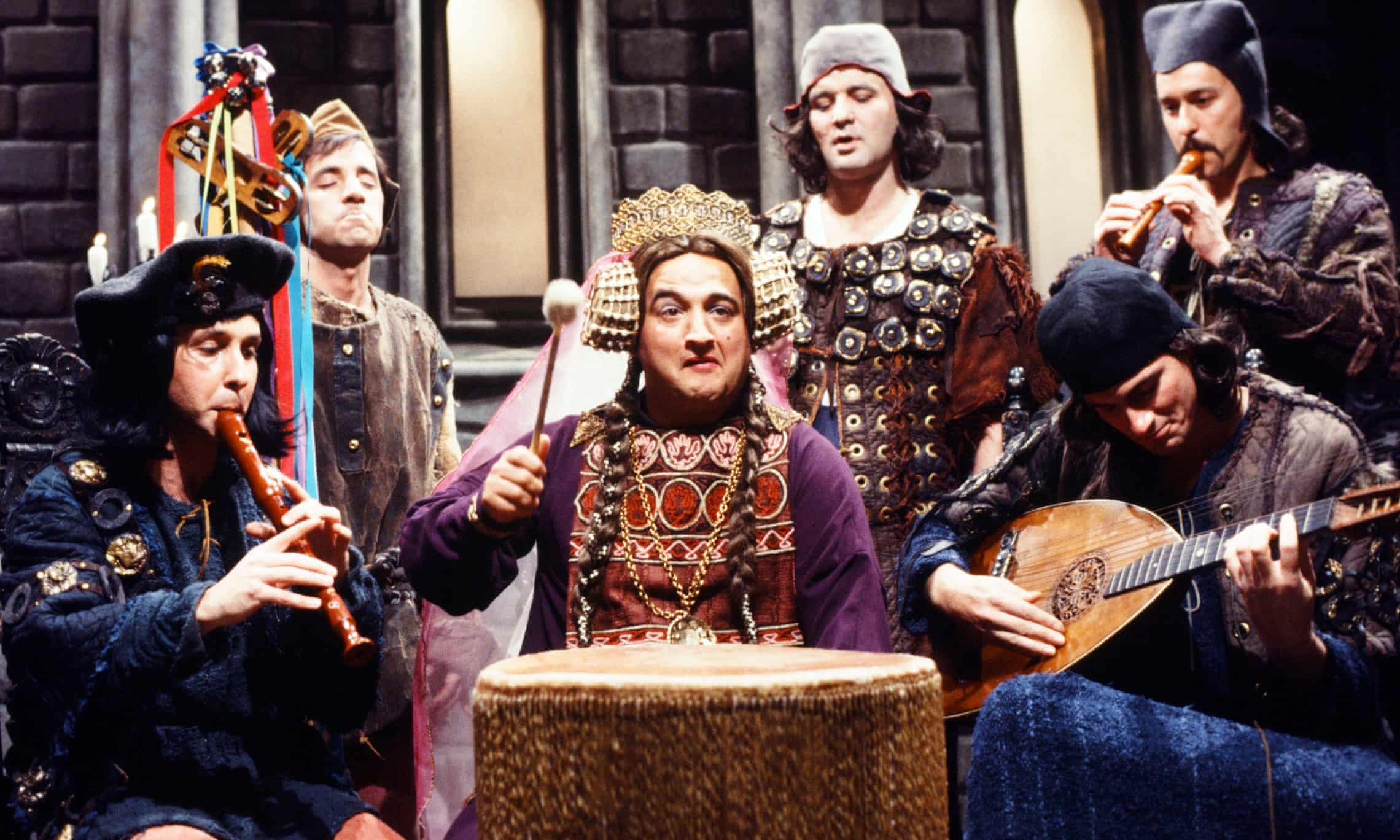
The actor, who died of an overdose aged 33, would have been 70 this month. His enduring appeal lies not in his addictions, but in his comic genius
“What you need to understand about John Belushi,” the director Ivan Reitman tells me, “is he really was this extraordinary talent. I’ve known a lot of famous people but he was at the centre of the zeitgeist in a way that’s hard to describe now. But his fame took over to a degree I’d never seen before and haven’t seen since.”
Belushi would have turned 70 this month, but instead he died aged 33 in 1982. Yet unlike other influential comedians of that era who died young – Doug Kenney, the founder of the comedy magazine National Lampoon; Belushi’s Saturday Night Live (SNL) co-star Gilda Radner – his legend burns bright. His face can still be seen on a million T-shirts and even more posters on the walls of those born decades after he died. In 2015, Rolling Stone votedhim the greatest of all of SNL’s 145 cast members, beating Eddie Murphy, Tina Fey and Bill Murray. The magazine cited Belushi’s comedy skills and physicality – “a wrestler’s body with a dancer’s feet, something boyishly vulnerable in his madness” – as the reasons for his lasting appeal, and this is all true. But it would be naive to pretend that Belushi’s premature death doesn’t play a part in his enduring reputation.
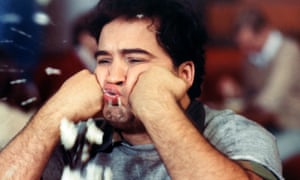
Ever since he was found dead in the Chateau Marmont hotel in Hollywood, his heart stopped by an overdose of cocaine and heroin, Belushi has become synonymous with hedonism, appetite, excess – like his memorably greedy character Bluto in Animal House. His consumption of narcotics, especially cocaine, has become only more infamous since he died. This is thanks in no small part to Wired, the biography published shortly after his death, written by Bob Woodward, which laid out in deadening detail how much cocaine Belushi took and when.
Belushi’s loved ones loathed Wired, and remain wary of talking to outsiders about him, resentful of how he has been reduced to his addictions. Belushi’s widow, Judy Belushi Pisano, puts it this way: “Several articles – and a rather well circulated book – have covered the drug story. It would be refreshing to have a story that actually celebrated John’s beautiful life: his courage to forge the life he dreamed in an unfamiliar landscape, his dedication to his craft, his epic friendships and loving temperament.”
But the life of Belushi cannot be told without reference to his death. And as much as those close to him wish others would stop focusing on the drugs, almost all the people I speak to about him talk without prompting about the effect drugs had on the man they loved. But it is also true that while the drugs might have added to his legend, he wouldn’t be a legendary comedian if he had just been an addict.
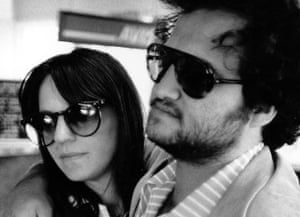
Belushi was born and raised in suburban Chicago, the oldest son of Albanian immigrants. “His parents never assimilated and I think it was hard for John, going to this all-American high school in the day and coming home to this very Albanian family in the evening. None of us in the neighbourhood even knew what Albania was,” says Pisano, who started dating Belushi while they were at school together. “John looked different from all of us – dark, and there was a joke that he was born with a beard. So he was self-conscious of his ethnicity, and he never brought people back to his home – he always went to other people’s houses. Maybe that’s when he got in the habit of always hanging out with people.”
Whatever insecurities Belushi felt about his background, he was a star from the get-go. At school, he was a footballer, a drummer in a band, a talent-show champion and the homecoming king. After a brief foray into college, he tried out for Second City, the Chicago improvisational comedy enterprise that has since trained Steve Carell, Stephen Colbert and Amy Poehler. He was – and remains – the only actor to be hired directly into the main troupe, as opposed to having to train with the touring company first. Belushi, by now something of a shaggy haired, dope-smoking hippy, could do extreme gross-out jokes, but also subtle physical comedy, and he stole every sketch he was in.
“The first night I saw him improvising on stage, I thought, ‘God, I will never take chances like that. I don’t have that kind of courage.’ But there was always something safer and more comfortable about being me than there was about being him,” Belushi’s fellow Second City performer, Harold Ramis, later recalled.
Belushi was then hired by the National Lampoon to do its stage and radio shows, along with Christopher Guest, Chevy Chase, Radner, Bill Murray and Ramis. This was arguably the greatest generation of young American comedic talent, and Belushi was at the very centre of it. Reitman produced the off-Broadway production, the National Lampoon Show. “I tried to direct them, but they all laughed that off – they directed themselves. But while they didn’t listen to me, they all listened to John. He was the most remarkable performer in this remarkable group. He would just walk on stage with this Brando-like charisma,” says Reitman.
People who knew Belushi in the early years describe a warm and deeply loyal man, one who always tried to get jobs for his friends and was so gentle that if his cat fell asleep on his lap he would be late for rehearsals rather than wake up his pet. On the other hand, he could be “intimidating, because he was such a force of personality. That was how you had to be to stand out and be funny in that group,” says Reitman. It was at this point that Belushi was hired to be in the first season of SNL. “John was wary of TV at first, but he knew the most essential thing: how to hold the audience in his hand. He never left the stage without connecting with the audience. So it wasn’t a surprise to me that he took off like he did,” says Lorne Michaels, SNL’s creator and producer.
As much as the show made Belushi’s name, it was, Pisano tells me, “also something of a battle for him”. Belushi had struggled with Chase and Guest at National Lampoon: “They had a private school, put-down kind of humour, and John was an easy mark. He was from the midwest, he was overweight, he hadn’t graduated from college, he was ethnic – no, even better, he was Albanian. This was all good fodder,” she writes in Belushi, her 2005 biography of her late husband. This dynamic repeated itself on SNL, as Chase was also hired in the first season: “Chevy has a very quick wit and his humour could be cruel. I think they were mutually fond of each other, but they were competitive,” she says.
But Belushi soon found his groove and eventually became the show’s star, thanks to his parody of Joe Cocker, his samurai character, his furious weather man and, eventually, the Blues Brothers with his close friend Dan Aykroyd. But there were some complaints about his behaviour.
“He started to say: ‘I don’t want to do the girls’ scenes,’” says Pisano, meaning he would refuse to act in scenes written by women. Belushi was close to Radner and hugely respected her as a comedian, but other women on the show weren’t impressed. Fellow SNL performer Jane Curtin has since described his behaviour as sexist.
“By the second season, John was on covers of magazines and experiencing a whole new level of fame. It became overwhelming for him, and that was expressed in all the late nights, the drugs,” says Michaels.
In 1976, Ramis, along with the National Lampoon’s Doug Kenney and Chris Miller, wrote a comedy script about a college frat house. Universal Studios told them that unless they got Belushi to play the toga-wearing, compulsively eating character Bluto they wouldn’t produce the movie.
“So I went to New York to persuade him,” says the director John Landis. “We met in my hotel and during the meeting Belushi makes a call down to room service. Soon after he left, and suddenly all these waiters walk in with plates and plates of food: spaghetti, shrimp cocktail, pie – everything on the menu. It was like something out of a Marx brothers movie.”
The 70s was a decade of serious film-making – Five Easy Pieces, The Godfather – but Animal House became one of the era’s defining movies. “That script captured the voice of the Boomer generation for comedy,” says Reitman, who produced it. “And John was central to it. Even though he was exhausted – flying between New York, where he was making SNL, and then out to Oregon for a few days a week to shoot Animal House – he was just terrific in it.”
Bluto was ostensibly a minor character, a bully with a endless appetite. But Belushi imbued him with so much energy he is still the first thing everyone thinks of about Animal House.
“I ended up taking dialogue away from him because John could do so much with his face and body. John played him like Cookie Monster crossed with Harpo Marx, and even at Bluto’s most aggressive, you still like him,” says Landis.
At around this time, Belushi and Aykroyd started performing as the Blues Brothers. Belushi was now in the biggest movie, the coolest TV show and in the most exciting band around. Just walking down the road to a diner would take him an hour, getting past all the fans.
“A lot of people who reach celebrity status shut down and don’t engage, but John always wanted to engage with everyone. But you have to be very grounded to cope with all those demands,” says Pisano.
The most notable film he made at this point was 1941, Steven Spielberg’s notorious turkey, and this became a pattern, with Belushi repeatedly making movies that failed to live up to expectations. The one exception was the second film that cemented his reputation: The Blues Brothers.
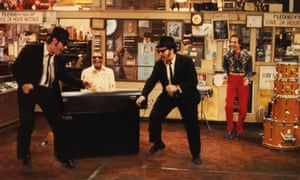
“By the time we made Blues Brothers, John was a massive star, so it was different working with him on this than it was on Animal House – he couldn’t go anywhere, and he had this awful addiction to cocaine,” says Landis. “We hired a guy to watch him and there were some really scary moments during the making of that movie. People say now John was difficult to work with, but he wasn’t. The only fight I had with him in all the time we worked together was about drugs, so it wasn’t a temperament thing, it was a health thing.”
Belushi and Aykroyd were a hugely endearing double act, which was the secret to that film’s success. But it was obvious that the energy Belushi had in Animal House was gone. In some Blues Brothers scenes, he seems barely engaged at all. “It was extremely frustrating. John was so great, but he wasn’t able to give 100% in this movie. With addiction, you can’t help someone unless they want it. It’s like offering a drowning man your hand and they refuse it. It was terrible. He went from being this really sweet guy to someone hyper and maniacal,” says Landis.
Afterwards, Landis and his wife, the costume designer Deborah Nadoolman, would meet up with Belushi for dinner occasionally: “We’d have a great time and then Deborah and I would go home. But John would go off to a punk club until 3am, and then another den of iniquity, then who knows. He was going 24 hours a day. But no matter what, he made friends everywhere – comedians, punks, whoever. Everyone loved John, because until the very end he was a warm, wonderful guy, and I’m still angry about how things turned out.”
Two years after finishing The Blues Brothers, Michaels met up with Belushi one evening in New York. “Hollywood was a whole new pressure for him, so, although he was still hilarious and the same John, he was so frantic. He’d just been in it for too long.” One month later, Belushi died in a hotel room after a drug dealer shot him up with cocaine and heroin. At the time, many put Belushi’s drug addiction down to his sudden, dizzying fame. But those closest to him think that is simplistic.
“John always had an uneasiness in himself, and he was trying to fill it with something. I was an element, but I wasn’t enough,” says Pisano. “And the drugs were a part of that – a big part of that. I don’t know, I’m sure one’s childhood has something to do with it.” What’s also clear from talking to those who knew Belushi, and from reading books about that era, is that while he did take a lot of drugs, many of the people around him were taking just as much.
“John was one of the big boys, but he wasn’t out there on his own. I think maybe people didn’t really know then how dangerous it was. Then John died and then they did,” says Pisano.
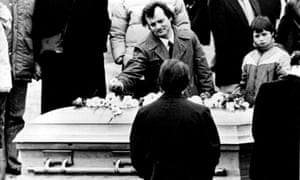
The photos from his funeral show a generation of comedy stars in shock. One of the most touching images is a bereft Bill Murray putting a flower on Belushi’s coffin. Aykroyd was working on a movie script for himself and Belushi when he got the call that his best friend had died, and that film became Ghostbusters. It is not hard to imagine Belushi in the role of Venkman, which cemented Murray’s fame. “It was clear that his spirit was within Danny’s script and I respected that,” says Reitman, who directed Ghostbusters. “When we started to create the character of Slimer, this rotund little ghost who eats a lot, it made me think of John. We called him Slimer, but it was really the spirit of John in all of our hearts.”
I ask Reitman about the comparisons between Murray and Belushi, and he points to the key difference between them:
“Bill was always much more careful about fame,” he says. “He’s very careful about who he socialises with and he’s very anti-Hollywood. He always wanted a much more simple life. Also, he never got into drugs, whereas John jumped in feet first.”
Landis sees another difference between them: “I think John would have been a much, much bigger star than Bill Murray. Bill is always Bill Murray, whereas John was a real actor. There’s very little in common between Bluto and Jake Blues.” Belushi left behind a pitifully small body of enduring work that belied his potential. “There’s all this mythology around John but the bottom line is he was a charming guy and a brilliant performer,” says Landis. “He was strong like a tractor and smart like a bull and he really could have gone on to do anything.”
Part of the fascination with Belushi is that, in retrospect, he looks, as Pisano puts it, “like a symbol of the times”: the 60s dope-smoking hippy who brought rock’n’roll to comedy in the 70s and was swallowed up by cocaine in the 80s. But his appeal lies in the man himself: there was nothing aloof or untouchable about him, as was the case with a lot of comedians of that era. There was something far more human, more emotional about Belushi.
So while audiences admired Chase, Steve Martin and Murray, they loved Belushi. He was as open and exposed as a sunflower, and while it ultimately contributed to his undoing, it is also why so many people still feel a connection to him.
“One of my favourite things in my office is a Polaroid of the two of us from 1976,” says Michaels. “I look at it and there was an innocence to John then, a brightness. That’s what I remember about him.”
Cover picture: John Belushi in Saturday Night Live’s medieval band sketch, 1980. Photograph: NBC/NBCU Photo Bank via Getty Images


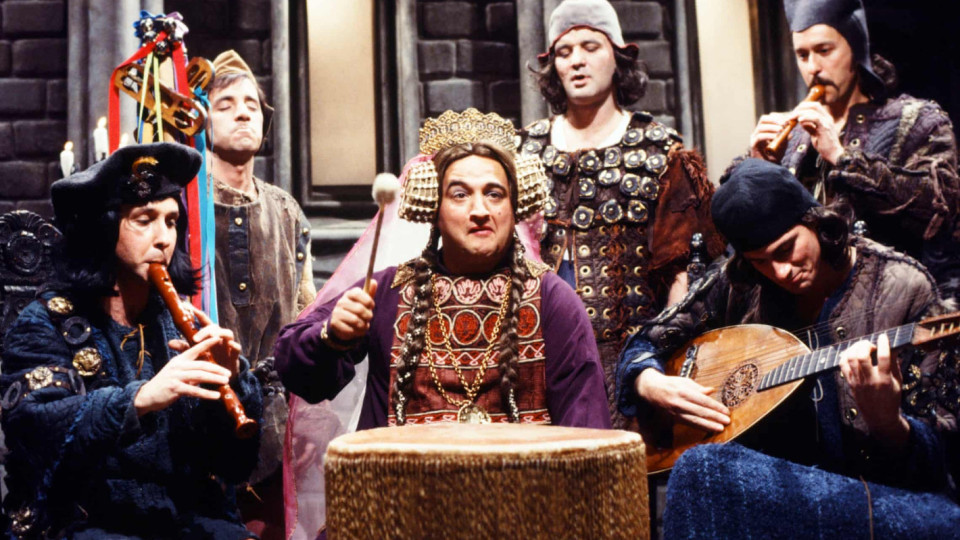
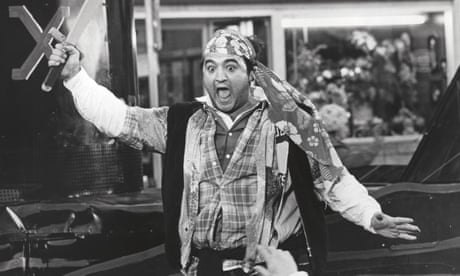
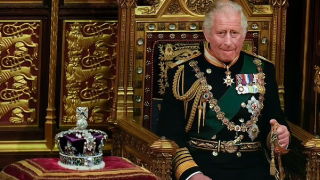


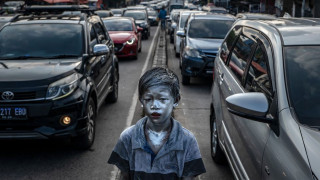



Leave a comment